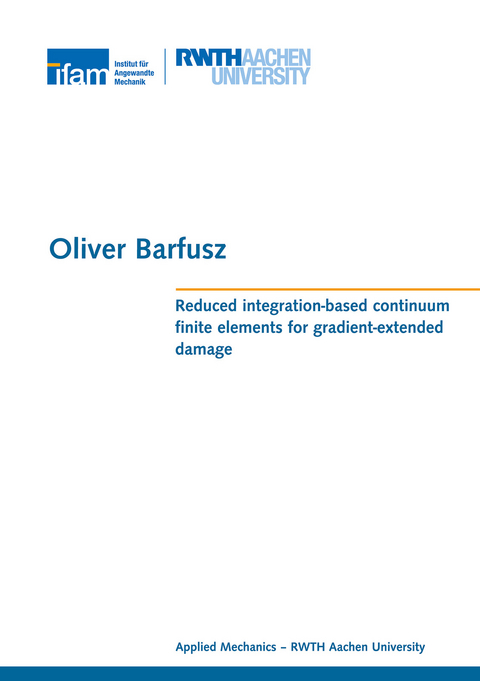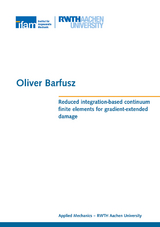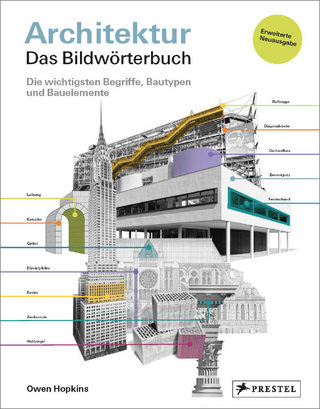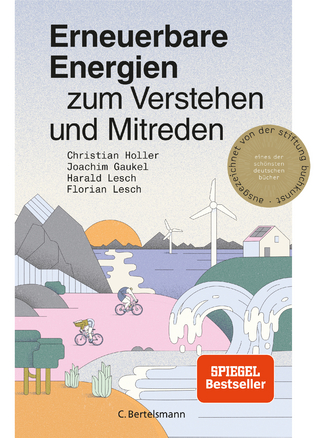Reduced integration-based continuum finite elements for gradient-extended damage
Seiten
Favored by the immense progress in information technology, numerical simulations based on the finite element method have become an indispensable tool in engineering science as well as industry. The quality and thus the validity of simulation results strongly depends on the underlying mathematical models. On the one hand, this concerns the employed material models, which are constantly being further developed in order to be able to represent even the most complex mechanical effects and phenomena. On the other hand, the choice of the finite element formulation plays a decisive role. Due to their simplicity, robustness and efficiency, element formulations based on low-order shape functions are preferred. However, it is known that such formulations behave much too stiffly, for example, in the case of bending dominated deformations as well as in the case of nearly incompressible materials, thus distorting the quality of the simulation results. Therefore, the main goal of the research field of finite element technology is to address these stiffening (locking) effects of low polynomial order elements in order to allow the most versatile use of the respective formulation.
This cumulative dissertation aims to make a valuable contribution in this regard. It consists essentially of three peer-reviewed journal articles in the subject area already published by the author (and his co-authors). Herein, the main goal is to extend a class of low-order continuum elements, which are based on the technology of reduced integration with hourglass stabilization, to the analysis of gradient-extended damage. In this context, gradient-extended damage is used to address the pathological mesh dependence in finite element simulations in the presence of softening material behavior.
Favored by the immense progress in information technology, numerical simulations based on the finite element method have become an indispensable tool in engineering science as well as industry. By using virtual prototypes, time-consuming, large-scale experiments can be reduced to a minimum, resulting in considerable time and cost savings. Furthermore, numerical simulations allow a particularly detailed analysis of processes, which would otherwise only be possible with great difficulty, and therefore contribute decisively to a deeper understanding of mechanical processes.The quality and thus the validity of simulation results strongly depends on the underlying mathematical models. On the one hand, this concerns the employed material models, which are constantly being further developed in order to be able to represent even the most complex mechanical effects and phenomena. At this point, for example, the (mesh-independent) description of ductile damage and failure processes should be mentioned, which represents a part of the focus of this dissertation. On the other hand, the choice of the finite element formulation plays a decisive role. Due to their simplicity, robustness and efficiency, element formulations based on low-order shape functions are preferred. However, it is known that such formulations behave much too stiffly, for example, in the case of bending dominated deformations as well as in the case of nearly incompressible materials, thus distorting the quality of the simulation results. Therefore, the main goal of the research field of finite element technology is to address these stiffening (locking) effects of low polynomial order elements in order to allow the most versatile use of the respective formulation.This cumulative dissertation aims to make a valuable contribution in this regard. It consists essentially of three peer-reviewed journal articles in the subject area already published by the author (and his co-authors). Herein, the main goal is to extend a class of low-order continuum elements, which are based on the technology of reduced integration with hourglass stabilization, to the analysis of gradient-extended damage. In this context, gradient-extended damage is used to address the pathological mesh dependence in finite element simulations in the presence of softening material behavior.After an introductory part, which outlines the motivation, the research relevant topics and a comprehensive literature review on the state of the art, the thesis starts with a work on a novel continuum element formulation for gradient-extended damage for large deformations. The essential goal of this work is to provide an accurate and particularly efficient finite element technology that is as generally applicable as possible for the prediction of damage phenomena in solids. The numerical efficiency results from the fact that only a single integration point is used at the center of the element. Since there is a remarkable analogy between the micromorphic balance equation and the steady-state heat equation, a similar derivation of a consistent hourglass stabilization is adopted from the thermomechanically fully coupled situation, which has already been studied by members of the author's work group. Here, the Taylor series expansion of all constitutively dependent quantities plays a crucial role. The performance of the novel single Gaussian point formulation is demonstrated by means of four representative structural examples with softening. The simulations show that the proposed stabilization scheme works reliably for the present multi-field problem. Compared to conventional low-order solid elements with eight integration points, the novel formulation is computationally much more efficient and less sensitive to mesh distortions, which especially improves robustness in regions with highly localized damage.The two subsequent articles deal with the incorporation of gradient-extended damage into reduced integration-based co
This cumulative dissertation aims to make a valuable contribution in this regard. It consists essentially of three peer-reviewed journal articles in the subject area already published by the author (and his co-authors). Herein, the main goal is to extend a class of low-order continuum elements, which are based on the technology of reduced integration with hourglass stabilization, to the analysis of gradient-extended damage. In this context, gradient-extended damage is used to address the pathological mesh dependence in finite element simulations in the presence of softening material behavior.
Favored by the immense progress in information technology, numerical simulations based on the finite element method have become an indispensable tool in engineering science as well as industry. By using virtual prototypes, time-consuming, large-scale experiments can be reduced to a minimum, resulting in considerable time and cost savings. Furthermore, numerical simulations allow a particularly detailed analysis of processes, which would otherwise only be possible with great difficulty, and therefore contribute decisively to a deeper understanding of mechanical processes.The quality and thus the validity of simulation results strongly depends on the underlying mathematical models. On the one hand, this concerns the employed material models, which are constantly being further developed in order to be able to represent even the most complex mechanical effects and phenomena. At this point, for example, the (mesh-independent) description of ductile damage and failure processes should be mentioned, which represents a part of the focus of this dissertation. On the other hand, the choice of the finite element formulation plays a decisive role. Due to their simplicity, robustness and efficiency, element formulations based on low-order shape functions are preferred. However, it is known that such formulations behave much too stiffly, for example, in the case of bending dominated deformations as well as in the case of nearly incompressible materials, thus distorting the quality of the simulation results. Therefore, the main goal of the research field of finite element technology is to address these stiffening (locking) effects of low polynomial order elements in order to allow the most versatile use of the respective formulation.This cumulative dissertation aims to make a valuable contribution in this regard. It consists essentially of three peer-reviewed journal articles in the subject area already published by the author (and his co-authors). Herein, the main goal is to extend a class of low-order continuum elements, which are based on the technology of reduced integration with hourglass stabilization, to the analysis of gradient-extended damage. In this context, gradient-extended damage is used to address the pathological mesh dependence in finite element simulations in the presence of softening material behavior.After an introductory part, which outlines the motivation, the research relevant topics and a comprehensive literature review on the state of the art, the thesis starts with a work on a novel continuum element formulation for gradient-extended damage for large deformations. The essential goal of this work is to provide an accurate and particularly efficient finite element technology that is as generally applicable as possible for the prediction of damage phenomena in solids. The numerical efficiency results from the fact that only a single integration point is used at the center of the element. Since there is a remarkable analogy between the micromorphic balance equation and the steady-state heat equation, a similar derivation of a consistent hourglass stabilization is adopted from the thermomechanically fully coupled situation, which has already been studied by members of the author's work group. Here, the Taylor series expansion of all constitutively dependent quantities plays a crucial role. The performance of the novel single Gaussian point formulation is demonstrated by means of four representative structural examples with softening. The simulations show that the proposed stabilization scheme works reliably for the present multi-field problem. Compared to conventional low-order solid elements with eight integration points, the novel formulation is computationally much more efficient and less sensitive to mesh distortions, which especially improves robustness in regions with highly localized damage.The two subsequent articles deal with the incorporation of gradient-extended damage into reduced integration-based co
| Erscheinungsdatum | 09.06.2022 |
|---|---|
| Reihe/Serie | Applied Mechanics - RWTH Aachen University ; 11 |
| Verlagsort | Düren |
| Sprache | englisch |
| Maße | 148 x 210 mm |
| Gewicht | 302 g |
| Themenwelt | Sachbuch/Ratgeber ► Natur / Technik ► Technik |
| Technik ► Bauwesen | |
| Schlagworte | finite element technology • gradient-extended damage • reduced integration with stabilization |
| ISBN-10 | 3-8440-8604-8 / 3844086048 |
| ISBN-13 | 978-3-8440-8604-1 / 9783844086041 |
| Zustand | Neuware |
| Haben Sie eine Frage zum Produkt? |
Mehr entdecken
aus dem Bereich
aus dem Bereich
die wichtigsten Begriffe, Bautypen und Bauelemente
Buch | Softcover (2024)
Prestel (Verlag)
32,00 €
vom Kolosseum über die Akropolis bis zur Alhambra
Buch | Hardcover (2023)
DK (Verlag)
19,95 €
Buch | Hardcover (2021)
C. Bertelsmann (Verlag)
18,00 €




